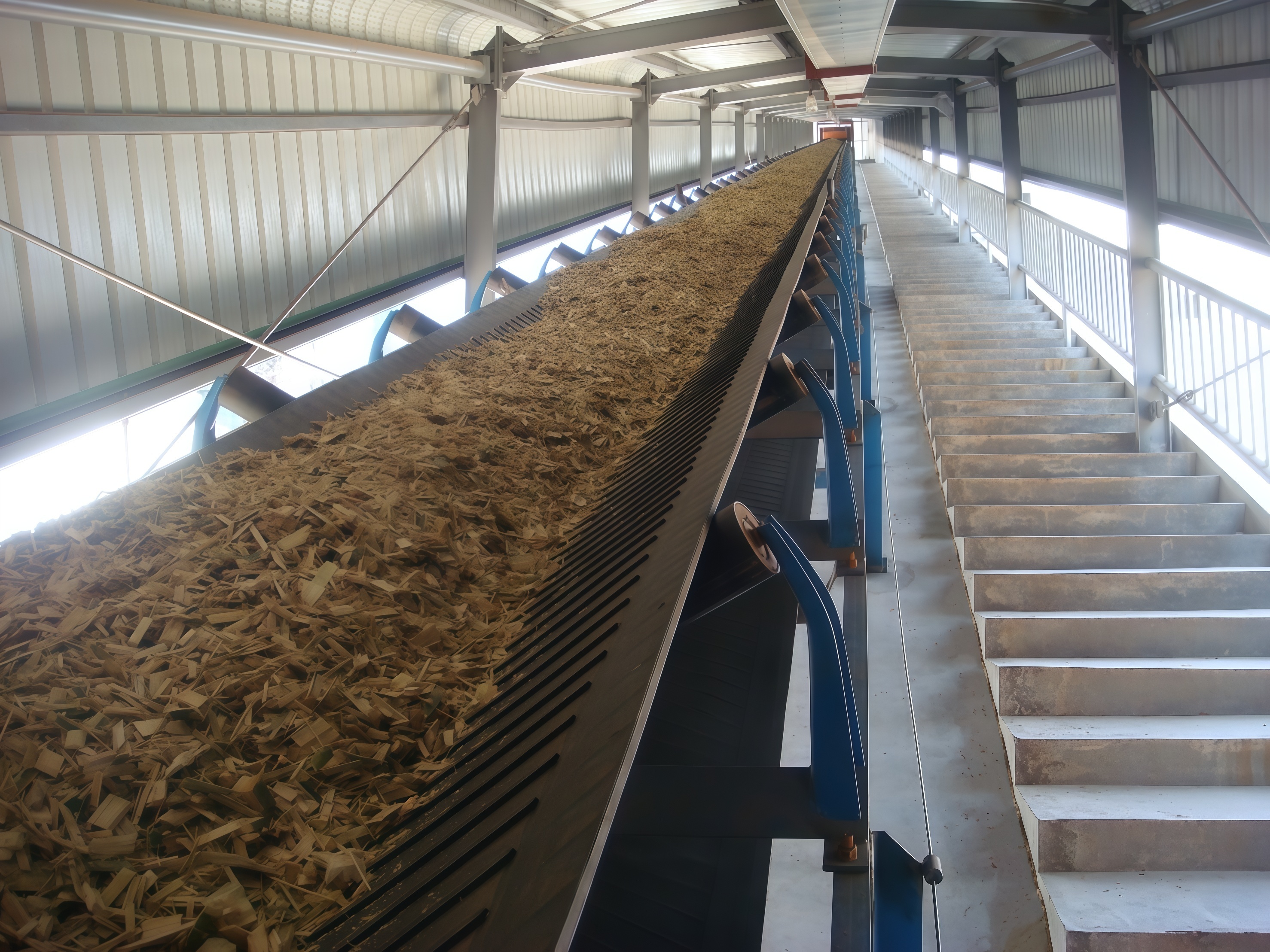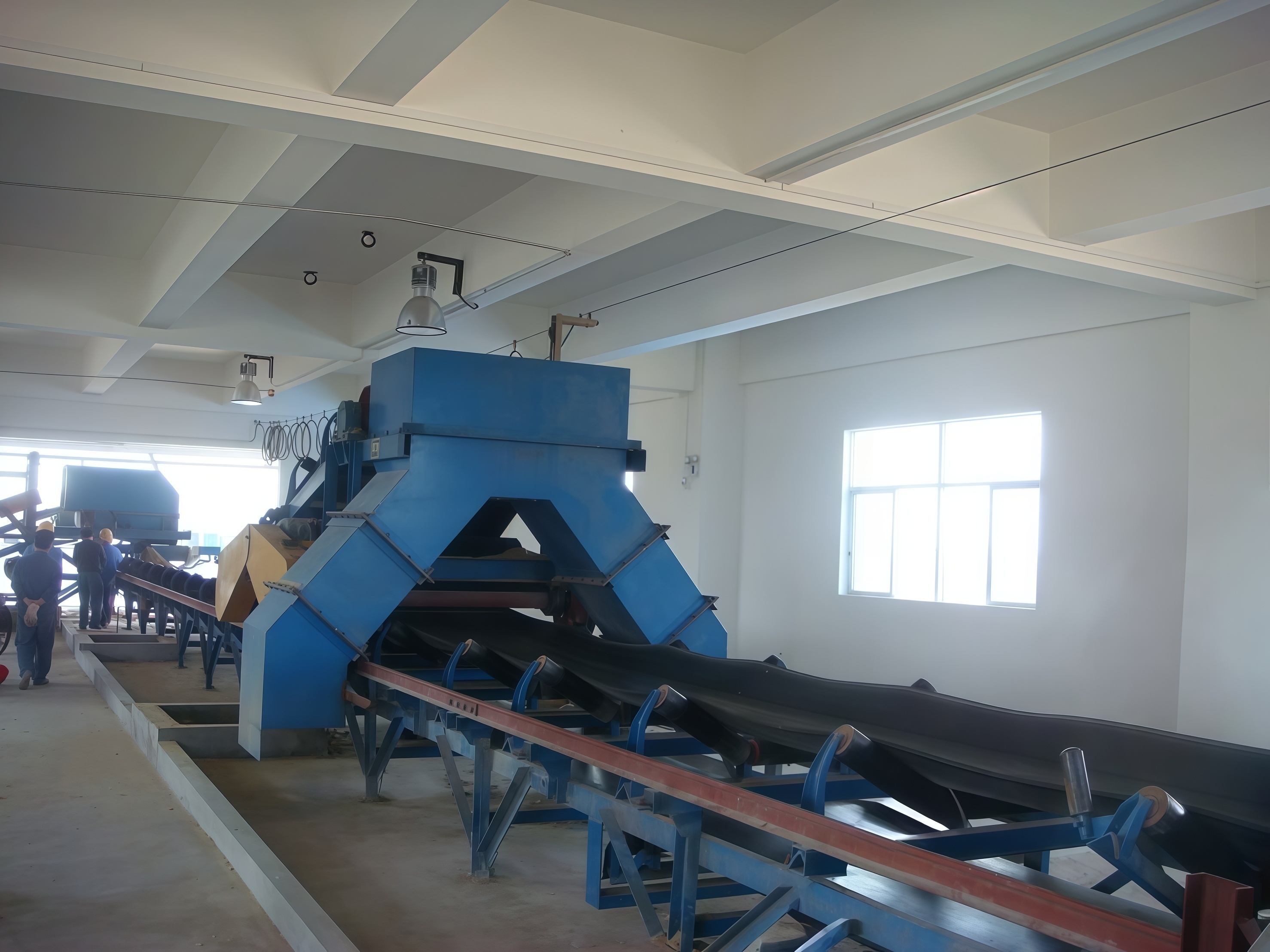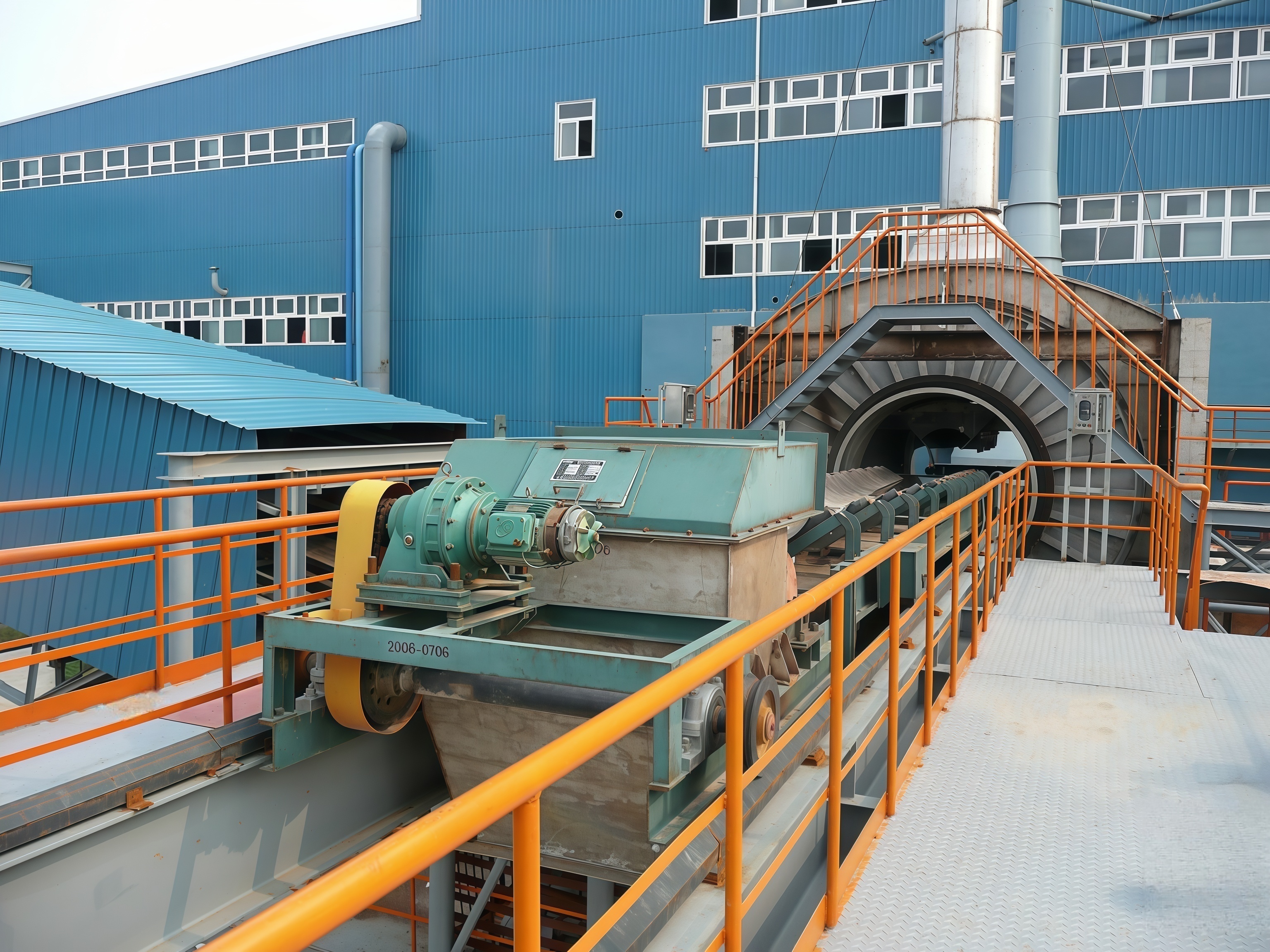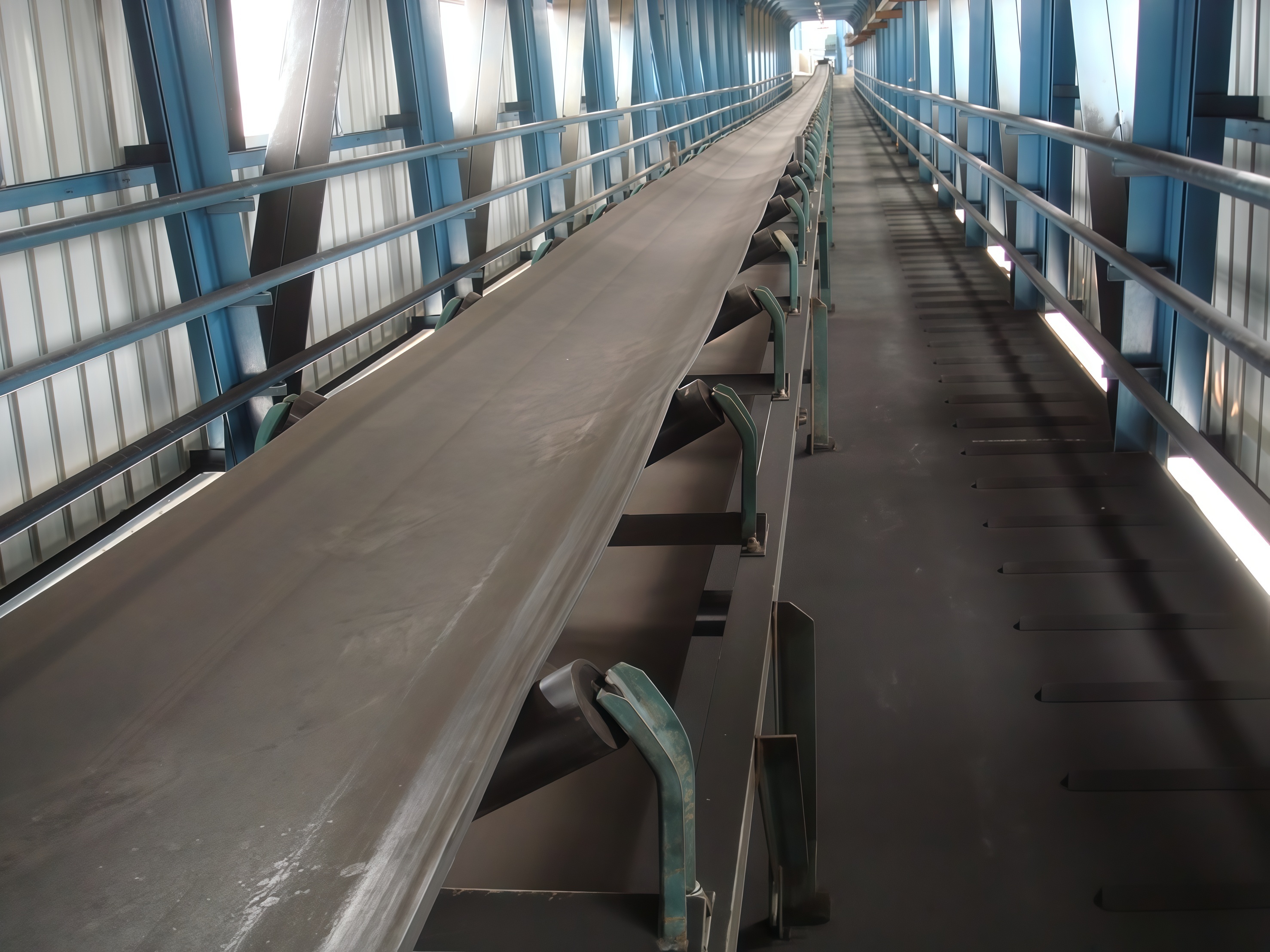TD75 and DTII Fixed Belt Conveyors for Bulk Materials: A Comprehensive Comparison
Author :
TD75 and DTII Fixed Belt Conveyors for Bulk Materials: A Comprehensive Comparison
The TD75 type fixed belt conveyor is a general-purpose belt conveyor equipment. It is mainly applied for horizontal or small-angle continuous conveying of bulk materials, such as coal, ore, and grain. It is widely used in industries such as mining, coal, chemical, and building materials. The TD75 type is the standard model. "TD" means "general belt conveyor," and "75" comes from the relevant design standards published in 1975. It is widely accepted by all basic conveying conditions.
Main Features and Application
General Purpose: It can carry a variety of bulk materials with particle sizes ranging from fine powder to small lumps—generally not exceeding 300 mm—in normal temperature dry and other general working environments.
Simple and Reliable Structure: The components used are standard units; therefore, the belt conveyors may be installed and maintained easily, reducing the cost of maintenance.
Stable Conveying Efficiency: Due to variable speeds of the belt conveyors, usually between 0.8-2.5 m/s, they can meet various production requirements. Their conveying capacity is large for a single unit.
Typical application fields:
Mining: From mining points to beneficiation plants or stockyards, ore and coal gangue are transported.
Building Materials: For transporting cement raw meal and clinker in cement plants, transporting sand and gravel aggregates in sand and gravel plants.
Grain: Transporting granular raw materials wheat and corn in grain depots and flour mills.
Structural Components
It is a conveyor belt generally designed with a significant stabilization feature, which provides several key structural component features:
Conveyor Belt: It is the basic part that transports the material. The common types of belts are ordinary canvas core conveyor belts and nylon core conveyor belts. These are chosen in consideration of the nature of the material, like wear-resistant types, oil-resistant types, etc.
Drive Unit: This unit gives power, generally composed of a motor, reducer, coupling, and drive drum; it will also control the start, stop, and running speed of the conveyor belt.
Idlers and Frame: The idler supports the weight of the belt and the conveyed material and reduces running resistance. The frame will hold the idlers, drums, and other parts in place to achieve overall stability of the equipment.
Tensioning Device: There are several types of tensioning devices, such as screw and counterweight tensioning. These tightly enable the belt to avoid slippage and allow proper conveying.
Cleaning and Safety Devices: The safety and service life of the operation are enhanced by installing various safety devices, i.e., belt cleaners to remove materials that would accumulate on the belt, belt deviation switches that operate when the belt deviates, and braking devices that facilitate emergency stopping.
The DTII type fixed belt conveyor is a general-purpose conveying equipment optimized and upgraded based on the TD75 type. It is mainly applied for the horizontal or small-angle continuous conveying of bulk materials such as ore, coal, grain, etc. Due to this, it can adapt to more complex working conditions and high production requirements. It finds applications within the mining, metallurgy, chemical, and building materials industries. "DT" means "belt conveyor," and "II" stands for the second-generation model. Its design standards better meet the demands of modern industry in efficiency and stability.
Core Features and Applicable Scenarios
Adaptability to Complex Working Conditions: Compared with the TD75, it has a high adaptability to working conditions such as higher temperatures(some components are adapted to temperatures above 120℃) up to 120°C, more humid and slightly corrosive environments, and materials with a high hardness and large particle size(500mm maximum particle size).
Stronger Conveying Capacity: The maximum conveying capacity reaches several thousand cubic meters per hour, against the mere hundreds for the TD75. It could hence satisfy the high-frequency, high-load production requirements for large mines and metallurgical plant aggregates.
Modular Structure: It indeed adopts a standardized and modular design. Idlers, drums, and frames are flexible combinations according to requirements. The adjustment in conveying length and inclination according to site conditions is also convenient, and future expansion or transformation is more comfortable.
Typical application scenarios are:
• Large Mines: Long-distance transporting ore from mining faces to beneficiation plants may be several kilometers in length and high capacity.
• Metallurgical Industry: Conveying coke and iron ore in steel plants, and conveying slag and concentrate in non-ferrous metal plants.
• Ports and Building Materials: Transshipment of coal and sand and gravel at port terminals, and conveying cement clinker and limestone in cement plants.
Key Structural Components Relative to the TD75 Type
It focuses on improving stability and adaptability with optimized key components while retaining the main structure of the belt conveyor for the structure of the DTII type.
Drive Unit: It can be configured with high-power motors and efficient reducers. Some models support frequency conversion speed regulation. According to the material flow rate, it can flexibly adjust the speed for conveying and achieve smooth startup without belt slippage.
Idlers and Frame: These idlers have applied higher-strength bearings and sealing structures(labyrinth seals),with stronger dust-proof and water-proof performance,more than 30% longer than the service life of the TD75 type idlers.The frame adopts lightweight steel, thus balancing strength with easy installation.
Tensioning Device: A hydraulic tensioning device is additionally provided, besides the screwing and counterweight traditional tensioning. It automatically adjusts the belt tension, particularly effective for long-distance, high-load conveying, and reduces the frequency of manual maintenance.
Safety and Protection Devices: It is equipped with belt deviation switches, slip detectors, and tear detectors. In addition, some models can be equipped with material level sensors and emergency braking systems. This allows for real-time monitoring of the operating status of the equipment, and in the event of an emergency, automatic shutdown occurs to minimize the risk to personnel.
Core Differences Compared to the TD75 Type
Although both belong to the general-purpose fixed belt conveyors, the design standards and performance are quite different. Therefore, model selection should be based on actual needs.
Aspect | TD75 Type | DTII Type |
Design Standard | Based on the old standard from 1975, with conservative parameters | Based on updated industry standards, with optimized parameters |
Maximum Conveying Capacity | Typically ≤1000m³/h, suitable for medium and low production volumes | Can reach above 3000 m³/h, suitable for high production volumes |
Applicable Materials | Normal temperature, general bulk materials, particle size ≤300mm | High-temperature, slightly corrosive materials, particle size ≤500mm |
Maintenance Cost | Components age quickly, with high long-term maintenance frequency | Components are more durable, with longer maintenance cycles |
Initial Investment | Lower equipment purchase and installation costs | Higher cost than the TD75 type, but better long-term cost-effectiveness |
fixed belt conveyor,DTII type fixed belt conveyor,TD75 type fixed belt conveyor,belt conveyor
Previous page
Previous page
Get a Free Quote
We sincerely welcome you to write to us, call us to inquire about our business, visit us, inspect us, buy us and adopt us. You have any questions you can write to call, you can also leave a message on this site, the site administrator will do our best to provide you with the most efficient service.










